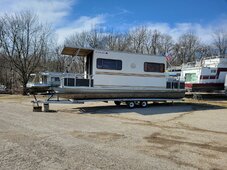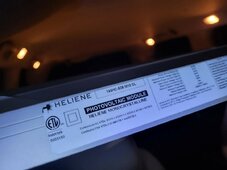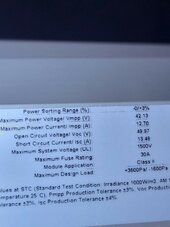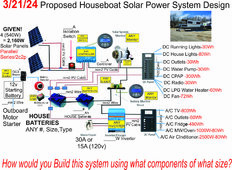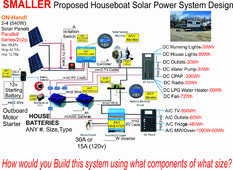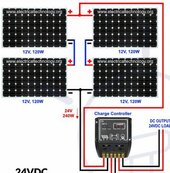Wow - those are massive panels. You will need help getting them to the roof. Can you get four panels? And fit four panels. Four is a much better number than three.
with four panels you can do 2s2p. (Two in series then two in parallel). With three you run into issues with too much Voc if in series and too many amps if in parallel.
What are the exact specs on the panel of:
Voc
Vmp
Imp
(All the below guess may be incorrect until we verify the exact specs of the panels.
Were you still planning on a 12v battery or 24v or 48v. The higher the battery voltage the fewer solar charge controller you will have…
At a 12v battery the 590w panel will provide 45amps at 13v - So the cheapest charge controller would be each panel connected to a Victron mppt 100/50. You will need three or four at &184.45 each.
(This is my Victron dealer).
You could connect two panels to a mppt150/70 $414.80 (slightly clipped) or a mppt 150/85 $453.05.
Now if your battery is 24v and you get four panels in 2s2p. You only need one mppt 150/70 (slightly clipped) or one mppt 150/85.
If your battery is a 48v and with four panels in 2s2p you could use one mppt 150/45 $218.45.
You will find the inverters cost about the same, 12v vs 24v vs 48v - the wiring will be much smaller with higher voltage - less copper = less cost. The batteries will be about the same too. 400ah of 12v vs 200ah of 24v vs 100ah of 48v.
You will have some converters to factor in…
Your other question of running the air conditioner - that depends on if you buy an inverter that can power it - then it needs to get the power from batteries and solar.
2360w of power when sunny at noon will supply enough watts to run the air conditioning, however when it is cloudy I only to 10% to 20% rated power - so 230w to 460w is not enough and you will be pulling from the battery.
with four panels you can do 2s2p. (Two in series then two in parallel). With three you run into issues with too much Voc if in series and too many amps if in parallel.
What are the exact specs on the panel of:
Voc
Vmp
Imp
(All the below guess may be incorrect until we verify the exact specs of the panels.
Were you still planning on a 12v battery or 24v or 48v. The higher the battery voltage the fewer solar charge controller you will have…
At a 12v battery the 590w panel will provide 45amps at 13v - So the cheapest charge controller would be each panel connected to a Victron mppt 100/50. You will need three or four at &184.45 each.
(This is my Victron dealer).
You could connect two panels to a mppt150/70 $414.80 (slightly clipped) or a mppt 150/85 $453.05.
Now if your battery is 24v and you get four panels in 2s2p. You only need one mppt 150/70 (slightly clipped) or one mppt 150/85.
If your battery is a 48v and with four panels in 2s2p you could use one mppt 150/45 $218.45.
You will find the inverters cost about the same, 12v vs 24v vs 48v - the wiring will be much smaller with higher voltage - less copper = less cost. The batteries will be about the same too. 400ah of 12v vs 200ah of 24v vs 100ah of 48v.
You will have some converters to factor in…
Your other question of running the air conditioner - that depends on if you buy an inverter that can power it - then it needs to get the power from batteries and solar.
2360w of power when sunny at noon will supply enough watts to run the air conditioning, however when it is cloudy I only to 10% to 20% rated power - so 230w to 460w is not enough and you will be pulling from the battery.



